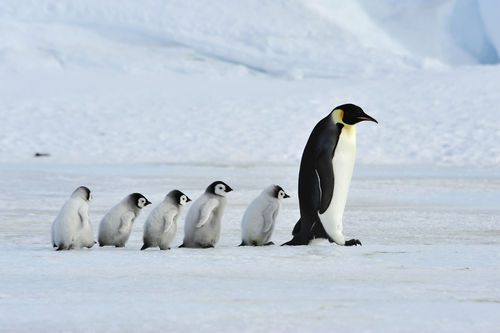PENGUINS
- jocelyn9918
- Feb 15, 2020
- 3 min read

So who didn’t know that there are no penguins in the northern hemisphere? In our Travel section last month about Alaska, we showed a picture of penguins and we were quickly told there are no penguins in Alaska. (You learn something new every single day). Penguins are flightless birds belonging to the family Spheniscidae. Worldwide, there are 17 species of penguin, all of which breed in the southern hemisphere. The name is believed to have originated from the Welsh "pen gwyn" which means white head. The name was originally applied to Great Auks, which are flightless birds that lived in the northern hemisphere, before being hunted to extinction in the 19th Century. Great Auks looked similar to penguins, and were also unable to fly, which is why they were killed off so easily by sailors who used them for food. All of the species live in the southern hemisphere.
Emperor penguins live off the coast of Antarctica. Unlike all other penguins in the Antarctic, emperor penguins do not migrate to warmer climates for the winter months. In fact, they are the only penguin that is able to survive the harsh Antarctic winters and breed during some of the worst weather conditions on earth.
King penguins live on the more temperate islands north of Antarctica. Although their habitat is warmer than that of emperor penguins, king penguins have four layers of feathers and huddle together for warmth.
Rockhoppers are found bounding — rather than waddling, as most other penguins do — among the craggy, windswept shorelines of the islands north of Antarctica, from Chile to New Zealand. These gregarious marine birds are among the world's smallest penguins, standing about 20 inches (50 centimeters) tall.
Macaroni penguins are seen on Travel Wild cruises on the sub–Antarctic Islands and, occasionally, on the northwestern Antarctic Peninsula and its adjacent islands. The largest breeding populations are found on the islands of South Georgia, Crozet, Kerguelen, Heard and McDonald.
The other species of penguins are Adelie, African, Chinstrap, Erect-crested, Fiordland, Galapagos, Gentoo, Humboldt, Little (Blue), Magellanic, Royal, Snares and Yellow-eyed Penguins.
Penguins do not live only in extremely cold conditions. Outside Antarctica, Penguins usually inhabit desertic regions and rocky islands where there are not a large number of land predators, so their inability to fly is not an issue. Their habitats range from the ice shelf on Antarctica, like the emperor penguin, to some temperate islands near the equator, like the Galapagos penguin. Also, there are penguins living in South Africa and Australia.
They are very cool birds! Did you know that, most of the time, pictures you see of penguins in books and online show them in their colonies on land? However, they average approximately 75% of their life in the water. Penguins are able to dive a long way into the water for food. Depending on the species, that distance can be up to 1,700 feet. However, they do need to surface for air on a regular basis. The period of time that they can remain under the water without doing so is from one minute to twenty minutes, depending on the species.
There are so many interesting facts about penguins it is mind-boggling; for instance, king penguins don't make a nest, not even the perfunctory small pile of stones that other penguin species go for. Instead, they lay only one egg at a time and carry it around on their feet, covered with a flap of abdominal skin called the brood patch. It is looked after in this manner for the whole of the average 55 day incubation period, being shuffled from one parent to the other every 6-18 days. When relieved of the egg, that parent then goes off to sea on an extended food foraging trip.
Upon hatching, the chicks continue to be protected on the parent’s feet and the brood patch for another 30-40 days, after which time they are large enough to be able to regulate their temperature for themselves. It can still be a wait of many days, 3-14 between parents swapping duties, so the chick has to wait some considerable time between feeds.
I could go on and on! They are so cute – there are tonnes of websites about penguins; have a look for yourself! I found information at penguins.cl, kidszone.ws, Wikipedia.org and penguins-world.com but there are plenty more.
Enjoy your research!
Author: Kathryn Hartwell

Comments